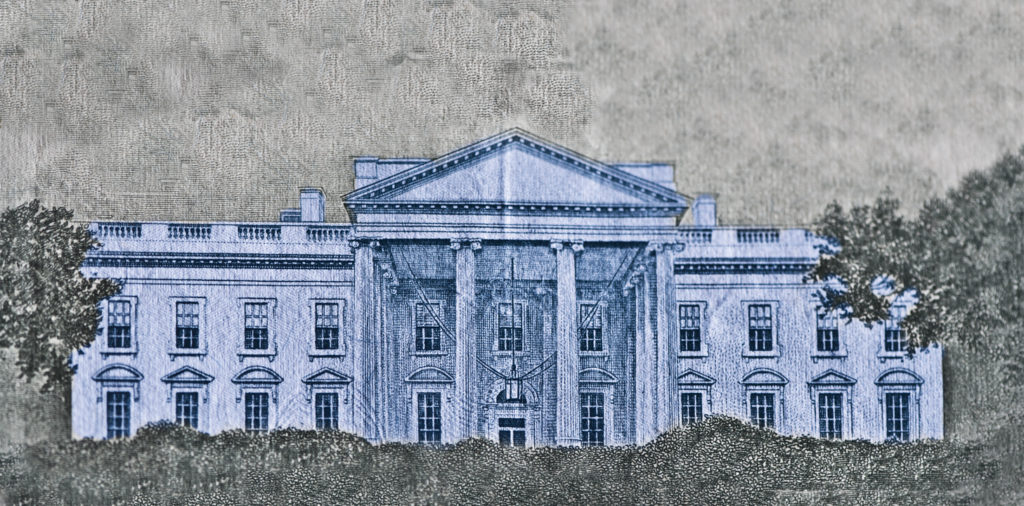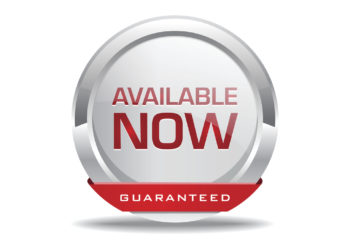In 2009, a US congressional committee with responsibility for science and technology policy invited a small group of representatives from research libraries, academia, publishing, and the information science research community to work together on a set of recommendations to help shape policy regarding the public’s access to peer-reviewed articles resulting from federally funded research. The formation of the Scholarly Publishing Roundtable (SRT) led to a proposal that ended up significantly shaping the federal policy subsequently issued by the White House Office of Science and Technology Policy — an unusual (probably unprecedented) example of cooperation and compromise across the sectors of the scholarly communication ecosystem leading directly to the implementation of government policy that greatly expanded public access to scholarly publications. To mark the tenth anniversary of the release of those guidelines, four principals of the SRT (T. Scott Plutchak, Fred Dylla, Crispin Taylor, and John Vaughn) have published an article in Learned Publishing looking back on the experience and suggesting some lessons that we might derive from it today. I conducted an email interview with the authors, part one of which is below. Part two is now available.

Your article describes vividly the acrimonious climate in the scholarly communication world at the time the Scholarly Publishing Roundtable (SPR) was convened. In your view, what has changed since then?
(Taylor) Three interconnected things: First, even though there are still well-supported and strongly held perspectives from the edges, the “center” – those that are genuinely looking for solutions – is broader and stronger. Second, governments and other funders are pushing creative change at a reasonable pace. And third, the innovation ecosystem is in full swing, and an array of practical solutions is emerging.
(Plutchak) While it is still easy to come across pockets of inflammatory rhetoric (particularly, I’m sorry to say, among librarians) I think the majority of people who are involved in these issues came to realize that making positive change in the scholarly publishing ecosystem requires acknowledging a broad range of perspectives and doing the hard work of crafting workable solutions.
Prior to the SPR’s formation, many entities both inside and outside of the publishing world had lobbied government agencies for years in pursuit of their own particular scholarly-communication agendas. Why do you think the work of the SPR ended up having such a strong influence on public policy?
(Dylla) The short answer is that we put a diverse group together that was willing to listen and work toward a compromise that we could document in our report. Following the release of the report, we were fortunate to shepherd our recommendations into legislative language and subsequent implementation rules for the federal agencies. The entire process was needed for the SPR to be successful. Given how little legislation has come out of our divided Congress over the last 5 years, I don’t know if a similar effort would be successful.
(Taylor) Those different agendas still exist, of course; but what SPR did was to start to define and empower those in the middle.
(Plutchak) It’s precisely because we weren’t lobbying. My impression, from the various policy makers we interacted with, is that they’d become pretty frustrated with the lobbying – we tried to represent that in the imaginary bar conversation that opens the article. SPARC had been wielding the moral cudgel for years and it was obvious to anyone who really paid attention to the issues that their rhetoric was over the top and exaggerated. But much of the pushback from the publishing lobby was just as heated and unhinged from reality. One side seemed to want to completely upend the publishing systems with no regard to the consequences; the other side seemed to be resistant to any changes whatsoever. You can’t make policy out of that. We included the full range of perspectives and arrived at thoughtful, well-reasoned recommendations that the policy makers could work with.
(Vaughn) Scholarly communication is a massive, worldwide activity whose breadth and impact engage a broad range of stakeholders – scientists and scholars as both producers and consumers of research and scholarship; universities and university librarians; commercial, non-commercial and society publishers; government and non-government funders; and more. The interests of these constituencies overlap in some ways, differ in others, sometimes sharply. As we noted in our paper, these forces aggregated into two warring factions of publishers and open-access advocates. The optimal goals of each group seemed to work to the detriment of the other, with OA advocates turning to the federal government to force open-access publishing of federally funded research, and publishers working with equal zeal against any such federal mandates.
An underlying premise of the SPR that developed over the course of our deliberations was that all constituents of the scholarly communication enterprise share a genuine, common interest in the quality, reliability, and accessibility of scholarly communication. If that is so, then it should be possible to draw on that common interest to develop a set of principles and practices that meet the cost of publishing while expanding access to the products of that publishing. Our report presented federal funding agencies with a set of recommendations that combined the need to meet the essential costs of publishing with the need for affordable access to those published results, including free access to federally funded research as soon as possible. This was in fact a compromise, one built on the recognition that the initial views of each party to the scholarly publishing debate proscribed at least some of the legitimate goals of the other, and that meeting the legitimate needs of both parties was necessary for the interests of the scholarly communication enterprise as it moves forward in a rapidly evolving environment.
Why do you think the particular individuals who made up the SPR were chosen for this role?
(Dylla) The list of potential candidates for the SPR evolved as John and I started the enrollment process after we received the request from the US House Science and Technology (HST) Committee to form the group. We had clear instructions from our primary contact on the HST Committee to make sure the group had representatives from all sides of the OA debate. It was obvious that we had to start with representatives of the two communities that appeared to be at odds as how to proceed with open access – the publishing and library communities. We considered an array of candidates from both of these communities by initially conversing with contacts that both John and I had. As we added candidates to the list, we asked them to suggest candidates. We did not have a long list of specific criteria for membership: clearly interest and some knowledge of the related issues were important. Secondly, we outlined our proposed timeline of several in-person meetings over the summer of 2009 with a goal of submitting a report back to the HST Committee and OSTP before the end of the year – and asked if the candidate could donate such time to the effort. We certainly wanted a committee that represented a broad view on the subject, but we tried to avoid consideration of candidates that had public positions that were considered hard-over and implacable in either direction of debate: everything has to be freely available right after publication vs. everything stays behind a paywall forever.
For the choice of publishing representatives, we strived for a balance among the industry, thus making sure we had representation from a large commercial publisher, a small non-profit publisher and the relatively new class of open access only publishers. For librarian representatives, we looked for candidates who had a record of studying and speaking out on access issues at meetings and conferences involving the wider scholarly publishing community. In addition, we supplemented the committee with members of the research community who had devoted years of research efforts to how scholars use and access scholarly publications.
Early on, you (Dylla) recognized how important buy-in from the university research community was going to be, and you were very successful at bringing important representatives of that community into the process. Can you tell us about how you went about that, and what challenges you faced?
(Dylla) As we were organizing the make-up of the SPR, we recognized our efforts would likely fail if we did not seek the input and subsequent buy-in from the university research sector whose members write, review, use, and largely pay for most of the costs of scholarly publications. John, with his position as EVP for the Association of American Universities (AAU), was able to convince three highly respected university provosts to join the SPR. Their roles were essential: they oversee the research and teaching activities and budgets of their faculty and research staff, in addition to oversight and budgeting of the university libraries. They brought detailed familiarity of their research community to the table and understood that if significant changes were to be made in their access and use of scholarly publications that they would have to implement any recommendations that were accepted and promoted by the SPR.
The word “consensus” comes up several times in the current article. In retrospect, how much of the resulting white paper would you say truly represented consensus, and how much represented compromise?
(Plutchak) Consensus usually requires compromise. It requires a willingness to accept less than your ideal in the service of moving forward. Reaching the consensus that we did required each person to listen to what the others felt was most important or desirable and talking through those issues to see if there was a point where the desires could meet. This is the opposite of the adversarial strategy that most of the players were engaged in where you listen only in order to figure out how to poke holes in your opponents’ arguments. That has some emotional satisfaction, but it’s hard to actually get anything done.
(Taylor) My recollection is that consensus is the right word, because all but two of us actively supported the entirety of the document. (As distinct, for example, from being ecstatic about portions of it and grudgingly accepting of the rest.) That said, in so far as it took dialog and even negotiation to get us to the point of consensus, I guess you could also call it a compromise.
(Vaughn) We believe that the Report represented an authentic consensus of all but two members of the group, and those two agreed on all recommendations save those concerning the role of the federal government in scholarly publishing policy. The achievement of that consensus, however, involved numerous “compromises” – perhaps more accurately described as changing or evolving views – over the course of our discussions as we sought to fit initially conflicting factors into a coherent framework of a balanced scholarly communication system intended to meet the needs and interests of all stakeholders as fully as possible.
(Dylla) It’s difficult to answer this quantitatively. Building this majority consensus was a process that evolved from the very first meeting. We could state the key issues at the beginning of our meetings, and we could state a long-term aspirational goal – there should be wide access to all scholarly publications to fully inform and power the research community. But there was not a consensus at the beginning for preparing the industry to adopt a hybrid of green and gold OA solutions. Our series of formal meetings, the informal dinners, and a lot of back forth discussion as we wrote the first draft of the report, were all part of the consensus-building process. The input of our research team was also essential. Initially, we did not have clear answers or background data on many of the issues raised in our deliberations. Our research team greatly aided our education on these matters with existing reports and some added analyses.
(Part two of this interview was published 18 May).
Discussion
2 Thoughts on "10 Years of Public Access to the Results of Federally Funded Research: An Interview with the Scholarly Publishing Roundtable (Part 1)"
Thank you! An instructive example of creating a policy. It is also relieving to read non-offensive language used deliberately. Looking forward to the part 2 tomorrow!
I can’t help but visualize how far such a committee would have fared had they been working now. Meet in person, wine and dine ahead of meetings in a quiet, private dining room? How inefficient and old fashioned. Just set up breakout rooms in Zoom, Teams, whosit, and ask everyone to turn on their cameras and to introduce themselves with a funny thing that happened. We’ll do 15 minutes and switch breakout rooms so everyone has a chance to meet everyone. Then we’ll have our virtual “ropes course” team building exercise before we dive in. Now can everyone see the virtual whiteboard for “parking lot “ issues? Great …. Please mute your microphone…
. If the SRT was taking their charge on 10 years later with all our present collaboration tools, I doubt they would have had as much to show.


